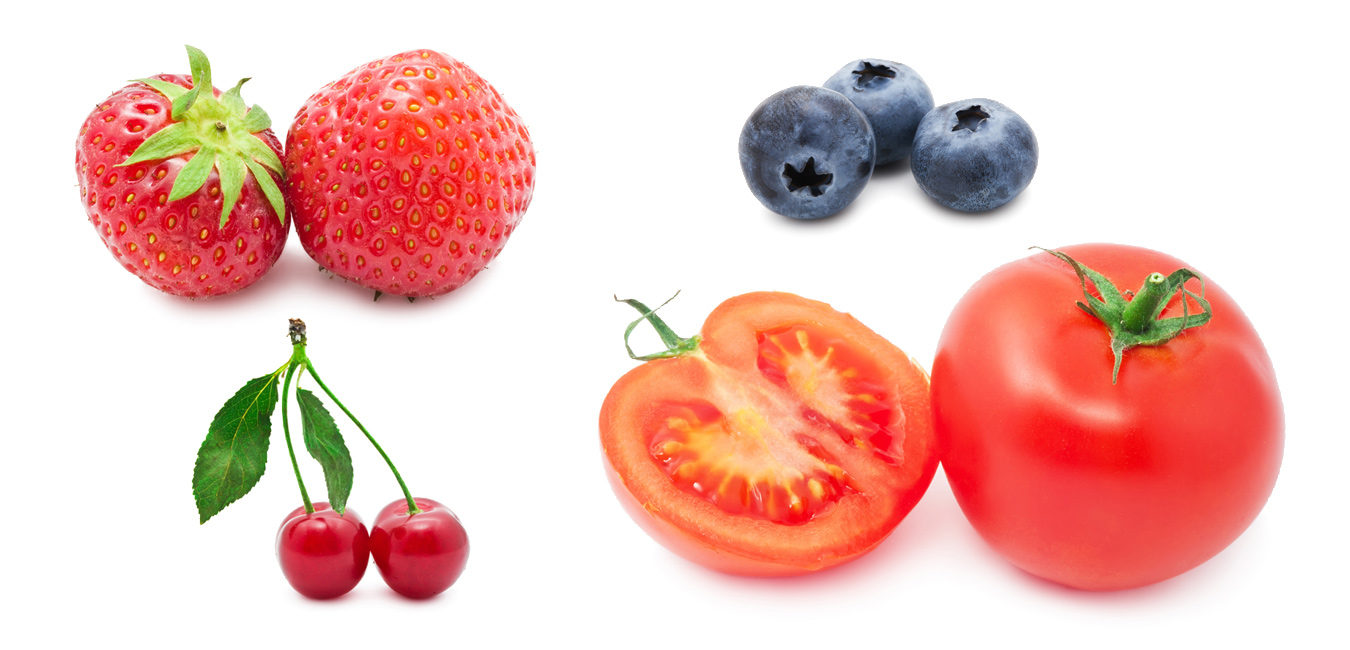Fruits and vegetables, the stars of a healthy plant-based diet, have long been recognized as powerful weapons against inflammation, which underlies cardiovascular disease as well as cancer and many other chronic inflammatory conditions. Scientists credit bioactive compounds present in these plant foods, such as carotenoids and flavonoids, for the inflammation-quelling properties.
With the summer’s bounty of fresh fruits and vegetables, the season is a great time to jumpstart a pattern of eating that keeps inflammation under control. These summer favorites offer a particularly tasty way to suppress destructive inflammation:
Tomatoes
Many studies have found an inverse relationship between tomato consumption and heart disease. One reason: Tomatoes are an abundant source of the carotenoid, lycopene, which appears to help down-regulate inflammation by inhibiting pro-inflammatory cytokines. Cooked tomatoes contain even more lycopene than raw ones, so sauces may be even more potent protectors of the heart. And adding olive oil—a common tomato sauce ingredient and inflammation fighter—creates a truly heart-healthy concoction. In a new study, researchers took blood samples of subjects before and after a meal that featured tomato sauce. They found that tomatoes in any form decreased cholesterol, triglycerides, and several pro-inflammatory biomarkers. But the effects were even greater when the tomato sauce was prepared with olive oil.
Strawberries
These bold-colored, delicious berries also seem to exert an effect on heart health, according to recent research from Italian and Spanish investigators. In the study, subjects were given 500 grams (a little more than 2 cups) of strawberries daily? for about a month. Blood tests taken before and after the trial showed that the berries significantly decreased total and low-density lipoprotein (“bad”) cholesterol, triglycerides, and markers of oxidative stress and improved platelet function. These effects were likely due to the effects of flavonoids known as anthocyanins and vitamin C. Strawberries seem to calm inflammation by downregulating the activity of NF-kB, a protein that is involved in pro-inflammatory responses in the body.
Blueberries
Blueberries are another rich source of anthocyanins, which are credited for reducing the risk for many diseases, most famously cognitive degeneration. A new investigation into a possible anti-inflammatory role found that a blueberry extract inhibited the production of nitric oxide, prostaglandin E, and interleukin-6, which are involved in or indicative of inflammation. No wonder that a 2013 study, based on Nurses’ Health Study data, found that eating three or more servings of blueberries and strawberries per week helped women slash their risk of a heart attack by a third. Anthocyanins, they concluded, help dilate arteries and prevent the buildup of plaque.
Cherries
In a 2013 study published in the Journal of Nutrition, 18 men and women aged 41 to 61 supplemented their diets with 45 Bing cherries (about 10 ounces) every day for almost a month. The subjects were healthy but had slightly high levels of C-reactive protein (CRP), an inflammatory marker associated with an increased risk of cardiovascular and other diseases. Eating cherries increased the levels of Interleukin-1 receptor antagonist (IL-1Ra), which has powerful anti-inflammatory properties, by 27.9 percent and decreased concentrations of CRP (by 20 percent) as well as seven other disease markers. Again, anthocyanins, which are responsible for the berries’ deep red color, are probably behind these healthful changes. Cherry season runs from May until August so you can enjoy—and reap the benefits of—these sweet berries all summer.

